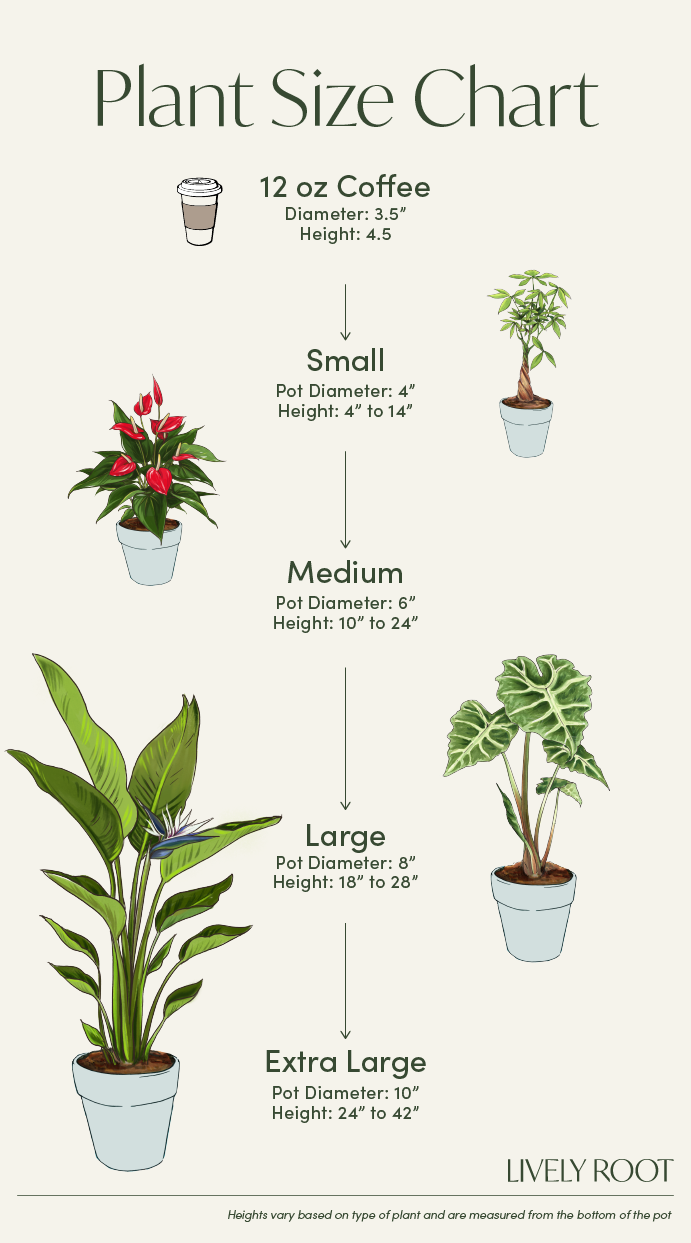

Red Christmas Cactus Care & Buying Guide

Bright, indirect light. Don't put into direct sun or it will bleach out their foliage.
Water your Christmas cactus when the soil is dry on the top inch. Always consider the environment and time of year. If your Christmas cactus is outdoors in a hot, dry climate, they may require watering every two to three days, since they are from a more tropical environment. If you treat them like an indoor plant where they stay in a cool or humid area, they might require water weekly. In the fall and winter months, decrease watering to stimulate blooming. Use filtered, bottled, or tap water sitting 24 hours to release the chemicals and water enough that the water discharges out of the drainage holes. Once the water is fully drained, replace them into the cache or decorative pot.
The plant comes from the tropics and prefers a humid environment. Add them on a pebble tray filled with water but don't let the roots sit in water. Spritz them each day or add a humidifier next to it to maintain higher levels of humidity.
The Christmas cactus does best in warm temperatures during the day between 70-80°F and night temperatures from 50-55°F. In the winter months, raise the nighttime temperatures inside to 60-65°F and avoid any drafts or heat vents nearby.
The Christmas cactus does best in warm temperatures during the day between 70-80°F and night temperatures from 50-55°F. Bring inside to overwinter before a frost in the fall.
Water the plant before fertilizing to avoid fertilizer burn. Use a liquid fertilizer bi weekly throughout the spring and summer months, then stop during the fall and winter.
When receiving the plant, do not repot immediately but wait at least 6-12 months. Repot in the spring, using a 2" bigger pot to keep the roots drier. (Too big of a planter could cause the soil to dry slower, which is not helpful.) Hydrate the plant before repotting. Place a piece of screening at the bottom of the container over the drainage hole to secure the soil and allow them to drain. Use a succulent and cactus mix to repot when the plant becomes root-bound. This plant prefers a little less room around their roots to promote blooming, so if you skip a year, that's fine. Lift the plant and release the roots against the existing planter. Use a clean knife or garden trowel to wedge between the pot and the soil to loosen. Inspect the roots. Notice if there are any dead or rotting roots and trim off with sterile pruners. Ensure the plant is sitting about 1 inch below the edge of the pot to avoid water spillage. Add more soil and backfill around the sides by tamping down. Fill up to the soil line but not over. Water thoroughly, leaving the soil damp but not soggy. If settling occurs, add more soil. Water well to dampen the soil and let it drain.
Prune yearly if needed to tame unruly branches. Cut between two leaf segments. You can trim the entire plant down by a third each year if needed.
Take the cuttings from pruning and let the cut ends heal for a few days to callus over. Leave them laid out on a paper towel. Afterward, place cut side down into succulent and cactus soil. Keep the soil lightly moist. Within two weeks, roots will form, and you'll have birthed new plant babies!
Red Christmas Cactus: Overview
The Red Christmas Cactus (Schlumbergera bridgesii) is a beautiful epiphyte with fleshy, flat leaves and exotic, bicolor flowers in red and white. Formerly known as Zygocactus, the Christmas cactus plant isn’t a true cactus, instead, it’s a popular succulent that blooms around November through February, with some varieties flowering just in time for Christmas.
Native to Central and South America, the Christmas Cactus adapts easily to USDA hardiness zones 9 to 11, thriving in bright but indirect sun. This gorgeous tropical plant requires some extra care to make the most of its striking blooms, but the effort is well worth it. Moreover, the Christmas Cactus is entirely safe for pets unless they ingest the whole plant.
The Christmas Cactus with red flowers symbolizes joy, passion, love, and hope, investing it with a meaningful message when given as a holiday plant gift to your loved ones.
Christmas Cactus colors differ and include the snowy White Christmas Cactus and the gorgeous Pink Christmas Cactus.
Christmas Cactus Plant: Benefits
- Relatively easy to care for
- Excellent pet-friendly plant
- Boosts humidity and cleanses the air from harmful toxins
- A perfect plant for the holidays
- Boasts beautiful blooms
Schlumbergera Bridgesii: Common Names
- Holiday Cactus
- Thanksgiving Cactus
- Crab Cactus
- Claw Cactus
Christmas Cactus Plant Care Guide
Growing this amazing indoor plant isn’t difficult as long as you know how to care for a Christmas Cactus the right way. Here are some Christmas Cactus care tips to help you grow a healthy plant that blooms regularly:
Watering and Humidity
Being a succulent, the Christmas Cactus plant doesn’t need frequent watering; water it weekly if taking care of your Christmas Cactus indoors. In hot weather, especially if grown outdoors, it may require more frequent watering. Water well, and let it drain before replacing it in its decorative pot. Decrease watering during fall and winter to promote blooming.
To properly care for a Christmas Cactus, provide this tropical plant with high humidity. Place the pot on a pebble-filled tray to retain moisture, mist your cactus, or use a humidifier for enhanced humidity.
Light and Temperature
Your Red and White Christmas Cactus will thrive in bright, indirect light. Keep it away from direct sun rays, as too much exposure to strong sunlight can leave its foliage looking washed-out and unhealthy. And if you want to know how to make Christmas Cactus bloom, the secret is to give your plant a period of dormancy with 12-14 hours of darkness in early fall.
The best temperatures for this plant are 50℉ to 80℉, warmer during the day and cooler at night. For the best Christmas Cactus plant care, keep this beautiful plant away from cold drafts and bring it indoors before the first frosts.
Soil and Repotting
The best Christmas Cactus soil should be well-draining. Use a succulent and cactus mix or add perlite or sand to regular potting soil to enhance drainage. When you receive your Christmas Cactus for sale, you don’t need to repot it immediately. These plants don’t mind being slightly rootbound (and even bloom better when they are). Springtime is the best season for repotting your Christmas Cactus. Remember to use a 2-inch larger pot with drainage holes.
Feeding and Propagation
Feed your Christmas Cactus with a liquid fertilizer once every two weeks during the growing season. Water the plant beforehand to prevent the fertilizer from burning the roots. In addition, Christmas Cactus propagation is easy. Take several cuttings, let them rest overnight so that calluses have time to form, and then plant in moist but well-draining soil for succulents.
Cleaning and Common Issues
After your Christmas Cactus delivery, check your plant for broken stems or leaves and trim these gently. Prune your plant at the end of the year to maintain its shape. Cut where the leaf segments attach.
Common Christmas Cactus problems include overwatering. Hence, watch out for soft and limp leaves and stems, and check the soil before watering. If your plant’s leaves are turning red, the issue is usually caused by exposure to direct sunlight. Move your plant to a place with bright but indirect light.
Red Christmas Cactus: Placement, Companion & Alternative Plants
The Schlumbergera Bridgesii Christmas Cactus is a gorgeous bloomer with eye-catching, unusual flowers in red and white that introduce a festive note into any interior.
Best Locations & Uses
- Excellent holiday plant
- Suitable for beginners
- Relatively drought-tolerant plant for well-lit spaces
- Perfect holiday gift
- Ideal for pet owners
Companion Plants
Combine your Red Christmas Cactus plant with cute mini succulents or other flowering plants to enjoy blooms year-round:
- Lipstick Plant (Aeschynanthus radicans): The beautiful Lipstick Plant is a vine with glossy green leaves and red flowers that resemble a tube of lipstick, giving this plant its name.
- Vriesea Bromeliad (Vriesea splendens): With its flower lasting several months, the striking Vriesea Bromeliad is easy to care for and makes an excellent statement plant.
- Black Flamingo Flower (Anthurium spp.): The unusual Black Flamingo Flower shows off glossy, deep green leaves and silky black flowers shaped like hearts.
Alternative Plants
Other easy-care succulents to consider for your plant display include:
- String of Pearls Plant (Senecio rowleyanus): The String of Pearls is a charming and easy-care succulent that’s perfect for hanging baskets or wall planters.
- Jade Plant (Crassula ovata): Considered a lucky plant in Feng Shui, the Jade Plant has thick, rounded leaves, edged with red.
- Hoya Heart Plant (Hoya kerrii): Grown from a single leaf without nodes attached, the Hoya Heart is a popular gift plant for a variety of occasions.
Order a Red Christmas Cactus for Sale From Lively Root
Brighten your home or office with a spectacular Christmas Cactus plant for sale from Lively Root!
















































